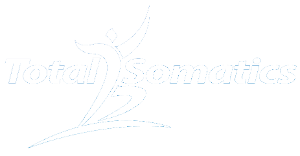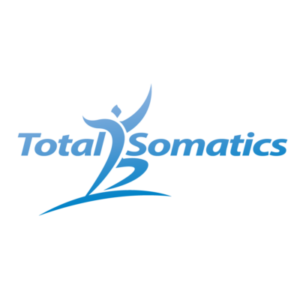What can you do to release muscle tightness and discomfort around your ribcage?
In the Southern hemisphere we are currently in spring, with many recovery from a very bad bout of influenza and respiratory problems. In the Northern hemisphere, you are approaching the winter coughs and colds. So in this week’s blog I am going to discuss how we can develop tightness through and around the muscles of the ribcage and what we can do to release the tension.
So what are intercostal muscles?
Intercostal muscles are several groups of muscles which run between the ribs and form part of the chest wall. Their primary role is to be involved in the mechanical aspect of breathing. The role of the intercostals are to help with the expansion and shrinking of the chest to facilitate breathing.

We can strain muscles in areas of our body and still live in relative ease. But if we strain our intercostals we can find it extremely painful because every time we inhale, our rib cage has to expand to house the inflated lungs; this can create intense pain to the sufferer. I find it very common during and just after winter to see people within my clinical practice suffering with intercostal pain from excessive coughing.
There are other ways people can strain their intercostals. Here a just a few common causes which I see:
- An injury or accident to the area. This could be a sporting injury, a traffic accident or being involved in a fight.
- Twisting of the upper body. This can be seen with people sat for long periods of time at the computer and they suddenly twist around for whatever reason. People are known to over exert their intercostal muscles when they are performing yoga poses, dance moves or an activity such as wrestling which requires twisting.
- Over stretching is extremely common. In order to open and release muscle tightness along the sides of your body, people will stretch this area and cause more harm than good. When people decide to stretch their intercostals by forcing or pulling the ribs apart (to increase space between the ribs), it can cause the intercostal nerves to become trapped between the ribs and muscles. When this happens, severe spasms and nerve pain occur in conjunction with muscle strain.
How can you heal intercostal muscle pain and strain?
Always check with your GP if you have had a respiratory infection so they can listen to your lungs and rule other possibilities out. If your GP informs you that it is a muscle strain there are a few self care techniques you can use.
- Immobilise the ribs - only do this for a couple of days and make sure your breathing is not compromised by wrapping and providing mild compression to the ribs.
- Hot and cold therapy - Use a cold pack on day 1. Then after day 1 start alternating the temperature packs on the problem area. This will really help to reduce any swelling and inflammation.
- Total Somatics (www.Totalsomatics.com) teaches you how to breathe deeply and also how to stop yourself going into well known poses called the ‘trauma reflex’ and the ‘red light reflex.’ I will explain more about these reflexes shortly.
It is very important to breathe deeply. When we breathe deeply we increase the amount of oxygen into the tissues which helps increase the healing process to injured muscle fibers. Obviously you will naturally want to breathe shallow. But the sooner we can start breathing a little deeper, this gradually improves the depth of our breath. In time our breath rate will be greatly improved.
Why is it important to start breathing deeply sooner rather than later?
A mild strain can take approximately 2 weeks to recover. For a moderate to severe strain, it can take in the region of 4-8 weeks for a full recovery. In Somatics we know that habituated poses and movements from injury can change postures quite quickly. In this case we can develop a posture which may look like we have slumped into one hip, resulting in one shoulder sitting higher than the other. In Somatics we refer to this posture as the “trauma reflex” because it results from an injury, incident or accident in many cases. We may develop another type of posture which involves us slumping forward with our shoulders and head rolling into the foetal position. In Somatics we refer to this posture as the ‘Red light reflex’ because a person will withdraw and become tighter by drawing the abdominal muscles and ribs towards the pelvis.
Your brain is really clever and will adapt very quickly to changes in how we hold ourself, causing distortions with our posture and further discomfort to our muscles and joints. But the great news is that the brain is also smart enough to reverse these habituated postures. When you practise somatics, you are able to release tightness in all muscles by PANDICULATING them. This is completely different and far more effective than stretching. Why? Because when we pandiculate we are changing the brain’s control over the muscles which in this instance are constantly tight and contracted.
Mindfulness with Total Somatics discusses breathing in greater detail and there are techniques used within the programs to help improve the quality of your breathing. Plus the somatic skills you learn release muscles which are associated with the mechanics of breathing.

When we learn Mindfulness with Total Somatics, you find that your range of movement improves, your pain levels reduce, your posture improves and your body feels more alive because you are able to take in more oxygen which will nourish your tissues. Another huge bonus is that when we teach the brain to communicate effectively with the muscles, we are able to train the brain to switch muscles on and off when they are required. This in turn will reduce the amount of fuel and energy required from your body to keep them ‘switched on’ when they are not needed. Chronic muscle pain and tightness are exhausting but with somatic movements we can reduce the level of discomfort significantly.
Somatics has certainly transformed peoples’ lives globally. Only today I received a lovely email from a very happy client. She informed me that she has just returned from her holiday. She had been suffering with severe knee and hip pain for several years after an injury. It had caused her to tighten through one side of her body, causing her to load body weight through one hip and knee, increasing the level of pain she already had. She has tried orthotics, pilates, yoga and manipulative therapies; but nothing has helped.
In her email today she wrote..
“ I have just got back from my holiday and I have to tell you that I walked for miles and my knee and hips were like they were before my fall…I cannot thank you enough for teaching me Somatics. I preach now to all those and there are many…people who tell me about their pain. I have given them your details because they should be doing Somatics. Thank you again for removing my pain. I can walk without pain again.”
This lady had learnt Somatic skills to open and release muscle tension through the sides of her body into her hips, plus other amazing somatic techniques. She simply does 20 minutes each day and she has found the results almost instant because we are involving the brain and teaching it to relax the muscles, only switching them on and off when required.
Would you like to improve your depth of breathing? Would you like to improve your posture if it has been affected by pain within your chest region? Are you asthmatic? As an asthmatic, does breathing appear challenging because the depth of your breath is shallow and short? As an asthmatic, do you notice you are prone to neck pain? This is a common complaint due to the fact that the neck muscles attach to the first few ribs and affect the movement of your ribcage when you breathe.
If you have tight muscles along the sides of your body, would you like to experience the amazing effects my client has found? Remember in her email to me she said, “I walked for miles and my knee and hips were like they were before my fall.” Would you like to feel that freedom from pain and limited movement? Join the thousands of people who have experience Mindfulness with Total Somatics online. I have created online programs which are self paced and can be watched in the comfort of your own home. I will teach you with my videos how to perform these powerful yet subtle somatic movements to reduce pain and improve your mobility. You will learn why somatics is more than just movements, there are many other areas we will explore which will help you to apply somatics in your daily activities.
I look forward to teaching you Mindfulness with Total Somatics online at www.TotalSomatics.com.
Take care,
Heidi Hadley xx
www.TotalSomatics.com












